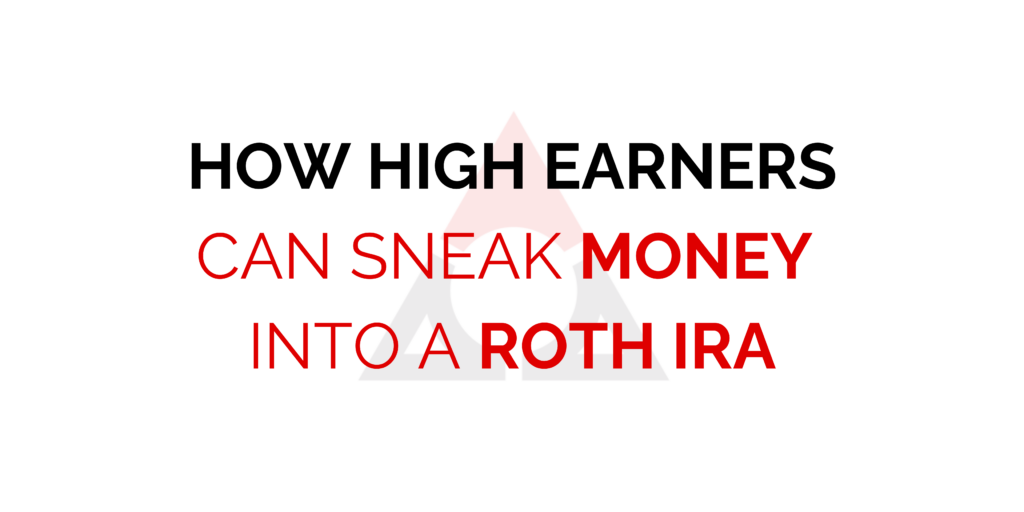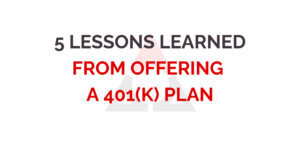How High Earners Can Sneak Money Into a Roth IRA (Legally, Of Course)
If you’ve ever felt left out of the Roth IRA party because you make “too much money,” I have good news. It’s called a Backdoor Roth IRA, and it’s one of the ways for high-income earners to build tax-free retirement income. And before you ask—yes, it’s legal, and no, you won’t get a knock on your door from the IRS (as long as you do it correctly).
Here’s how it works, why it’s great, and what you need to watch out for.
Why Backdoor Roths Are a Game-Changer for High Earners
One of the most frustrating things about tax-advantaged accounts is that many of the best benefits fade away once your income gets too high. The Roth IRA, for example, has strict income limits that keep high earners from contributing directly. But the Backdoor Roth IRA? No income limits. Zero. Nada. Which means if you’ve been shut out of Roth contributions because you’re “too successful,” this is a great workaround.
Even better? Maxing out your 401(k) at work—whether it’s a Roth 401(k) or a traditional 401(k)—does not impact your ability to make a non-deductible IRA contribution. Many people assume that hitting their 401(k) limit means they’re done saving for retirement that year, but the Backdoor Roth strategy is an extra way to get even more tax-advantaged money working for you.
While the $7,000 ($8,000 if you’re 50+) annual contribution might not seem like much in the grand scheme of retirement savings, doing this year after year adds up—especially when you consider that all future growth and withdrawals are tax-free.
The Long-Term Power of Roth Money
We love Roth IRAs for two big reasons: tax-free growth and tax-free withdrawals. By getting money into a Roth, you’re essentially making a deal with Future You: pay the taxes now, never worry about them again. And trust me, Future You will thank you when they’re taking out money in retirement with no tax bill attached.
How to Do a Backdoor Roth
The process is surprisingly simple:
- Contribute to a non-deductible Traditional IRA (because there are no income limits on those).
- Convert that money into a Roth IRA, ideally before it has time to generate any earnings (so you don’t owe taxes on growth).
Now, because we like to keep things squeaky clean for our clients, we typically recommend making the contribution in one monthly statement and then converting it in the next statement. It’s not a legal requirement, but it helps keep your records neat in case the IRS ever comes knocking.
What If Your Spouse Doesn’t Work?
Here’s a little-known bonus: if your spouse doesn’t have earned income, you can double up on Backdoor Roth contributions. As long as you have enough earned income, you can contribute to a spousal IRA on their behalf—meaning you get to move twice as much into Roth accounts each year.
Beware the Pro-Rata Rule
Before you go all in, there’s one big potential roadblock: the Pro-Rata Rule. If you have existing pre-tax IRA money, your conversion isn’t just based on the new contribution—it considers all of your IRA balances. That means instead of a clean, tax-free conversion, you could owe taxes on a chunk of the money you move over. Not fun.
If you have large IRA balances, let’s chat before you attempt this so we can strategize properly.
Keep Good Records (Because the IRS Loves Paperwork)
Anytime you do a Backdoor Roth conversion, you’ll need to report it on your taxes via Form 8606. And because the IRS is known for its love of documentation, keep records of your contributions and conversions for at least seven years. This way, if there’s ever a question about whether your conversion was done correctly, you’ll have the proof you need.
A Quick Word on the Mega Backdoor Roth
If you’ve maxed out your regular Backdoor Roth contributions and you’re still looking for more ways to get money into a Roth IRA, there’s a next-level strategy called the Mega Backdoor Roth. This depends on how your employer’s 401(k) is structured, but if available, it can let you move even more money into Roth accounts. If this is an option for you, it’s worth exploring.
Talk to Your Financial Advisor First
Like any good tax strategy, a Backdoor Roth IRA should be part of a bigger financial plan—not just something you do because you read a LinkedIn post about it (even if that post is fantastic).
If you want to know whether a Backdoor Roth makes sense for you, let’s talk. We do this all the time for clients, and we’d be happy to make sure you’re maximizing your tax-free retirement income the right way.
And if you don’t have a financial advisor? Well, we know a guy.
Like Traditional IRAs, contribution limits apply to Roth IRAs. In addition, with a Roth IRA, your allowable contribution may be reduced or eliminated if your annual income exceeds certain limits. Contributions to a Roth IRA are never tax deductible, but if certain conditions are met, distributions will be completely income tax free.
Unless certain criteria are met, Roth IRA owners must be 59½ or older and have held the IRA for five years before tax-free withdrawals are permitted. Additionally, each converted amount may be subject to its own five-year holding period. Converting a traditional IRA into a Roth IRA has tax implications. Investors should consult a tax advisor before deciding to do a conversion.
Investing involves risk and you may incur a profit or loss regardless of strategy selected. Every investor’s situation is unique and you should consider your investment goals, risk tolerance and time horizon before making any investment. Prior to making an investment decision, please consult with your financial advisor about your individual situation.
The foregoing information has been obtained from sources considered to be reliable, but we do not guarantee that it is accurate or complete, it is not a statement of all available data necessary for making an investment decision, and it does not constitute a recommendation. Any opinions are those of Robert Hrnicek and not necessarily those of Raymond James.




